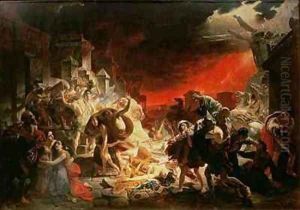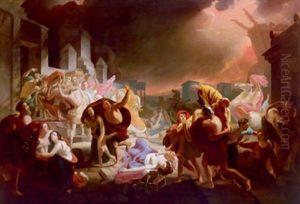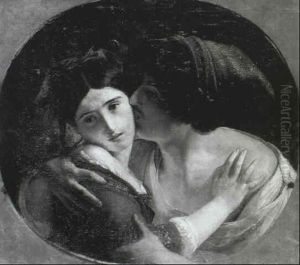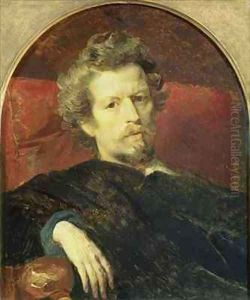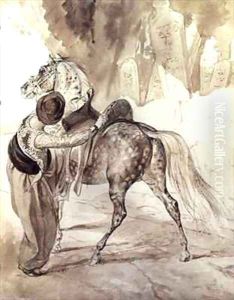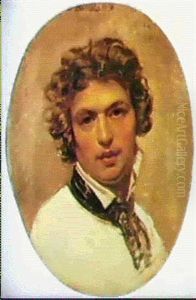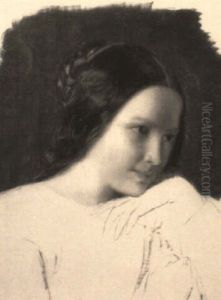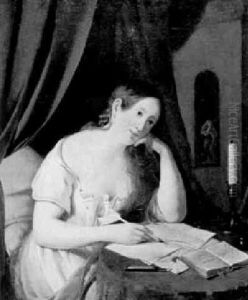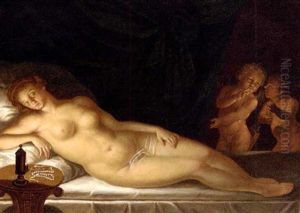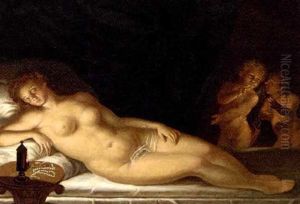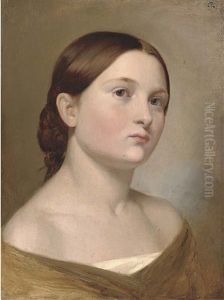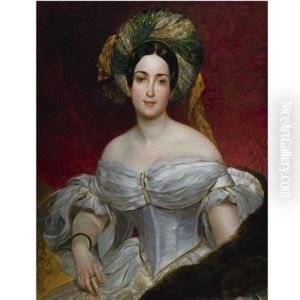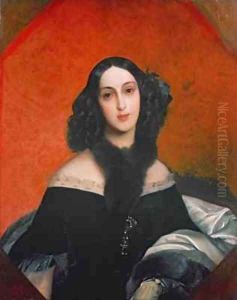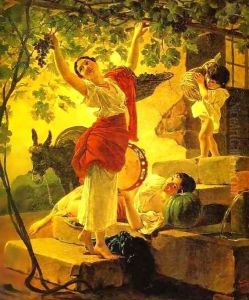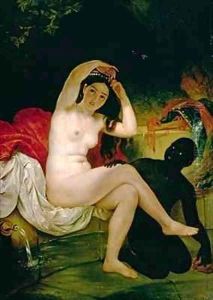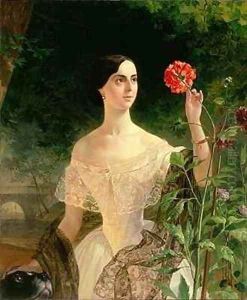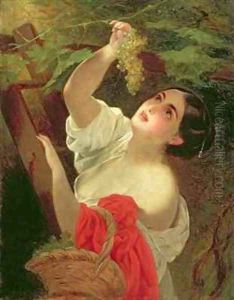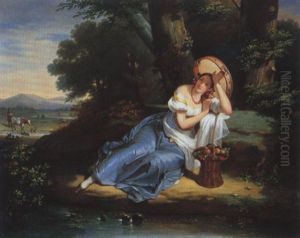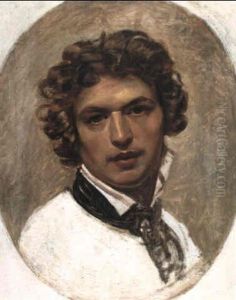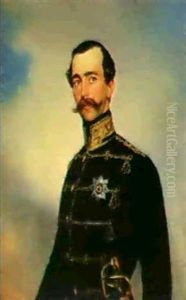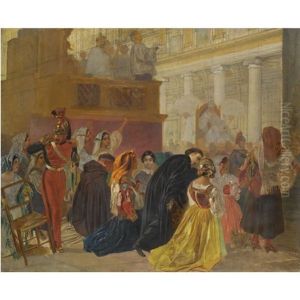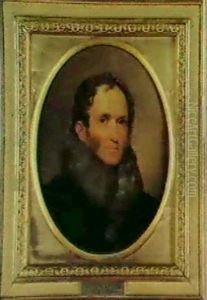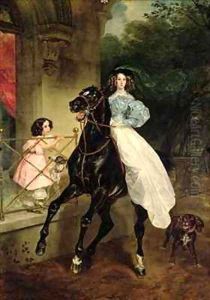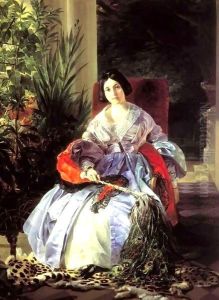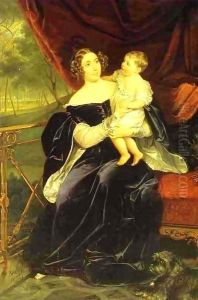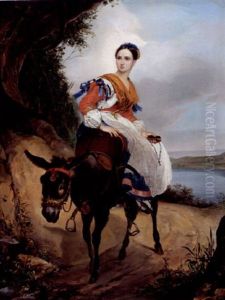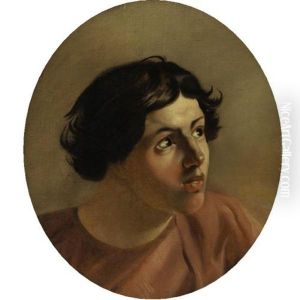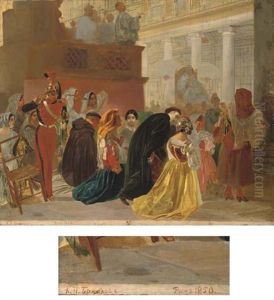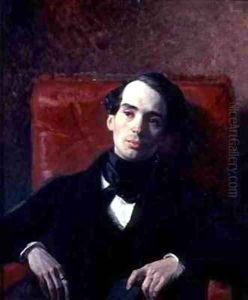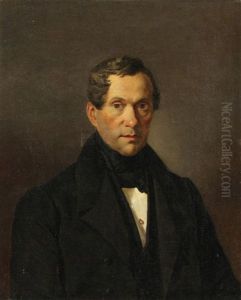Karl Pavlovich Bryullov Paintings
Karl Pavlovich Bryullov, also spelled Briullov or Brullov, was a Russian painter associated with the Romantic movement, and is considered one of the greatest Russian artists of the 19th century. Born on December 12, 1799, in St. Petersburg, Russia, into a family of artists, Bryullov received his early education at the Imperial Academy of Arts in St. Petersburg, where he later became a distinguished professor and contributed significantly to the Russian art scene.
Bryullov's early works were mainly portraits and genre scenes, but his travels to Italy in 1822 had a profound impact on his style and subject matter. It was during his stay in Italy that Bryullov created his most famous work, 'The Last Day of Pompeii' (1830-1833), which garnered international acclaim for its dramatic interpretation of the historical event and its innovative use of color and light. This masterpiece, which showcased Bryullov's exceptional skill in depicting human emotions and natural disasters, established him as a leading figure in Romanticism.
Apart from 'The Last Day of Pompeii', Bryullov's other notable works include 'The Rider' and a series of portraits that are highly praised for their intricate detail and psychological depth. His art was characterized by its romanticism, vivid character portrayal, and historical accuracy, which set new standards for Russian painting and influenced the development of Russian Romanticism.
Bryullov's influence extended beyond his masterpieces. He played a key role in introducing the Romantic movement to Russia and was instrumental in the development of the Russian Academy of Arts. His works inspired future generations of Russian artists, and his approach to painting influenced the course of Russian art history.
During the latter part of his life, Bryullov traveled extensively in Europe, living in Italy for many years before returning to Russia. However, due to health issues, he moved to Madeira, Portugal, where he died on June 11, 1852. Karl Pavlovich Bryullov left behind a legacy that immortalized him as a pioneer of Russian Romanticism and one of the most celebrated artists of his time.
